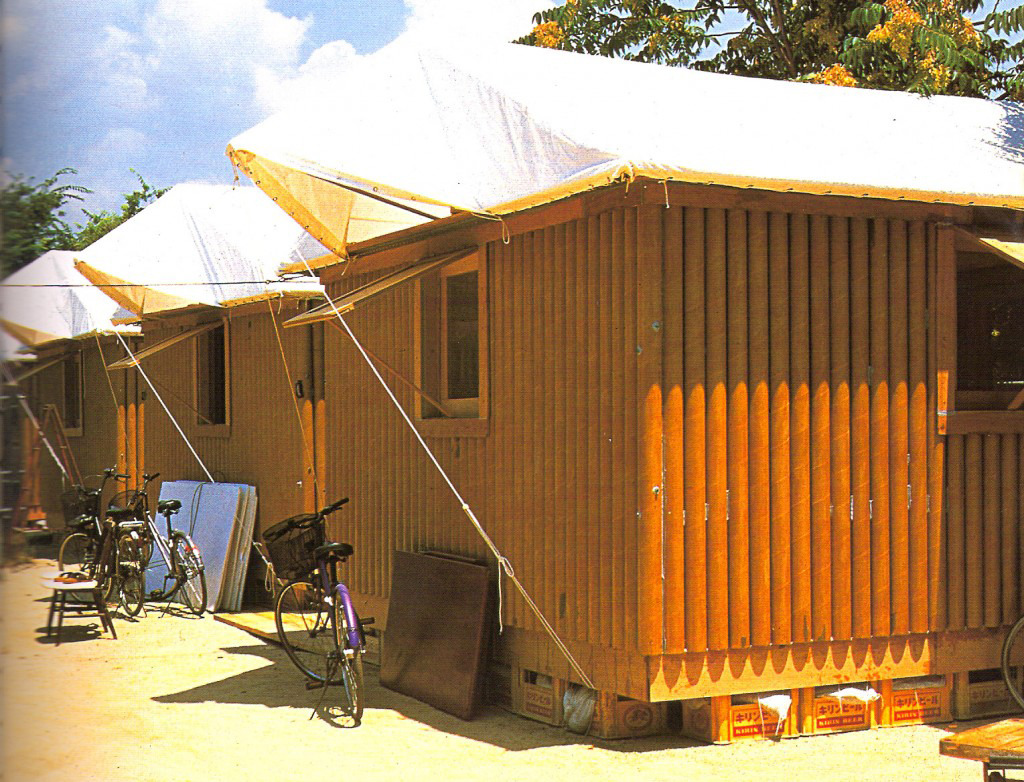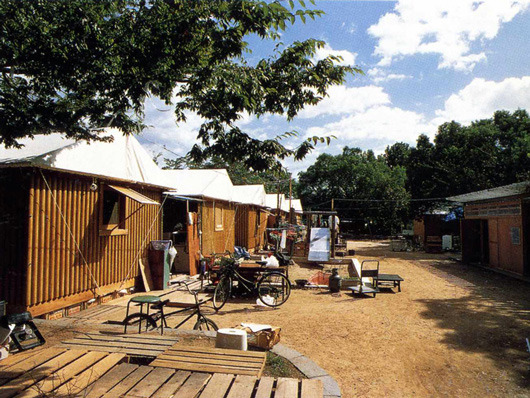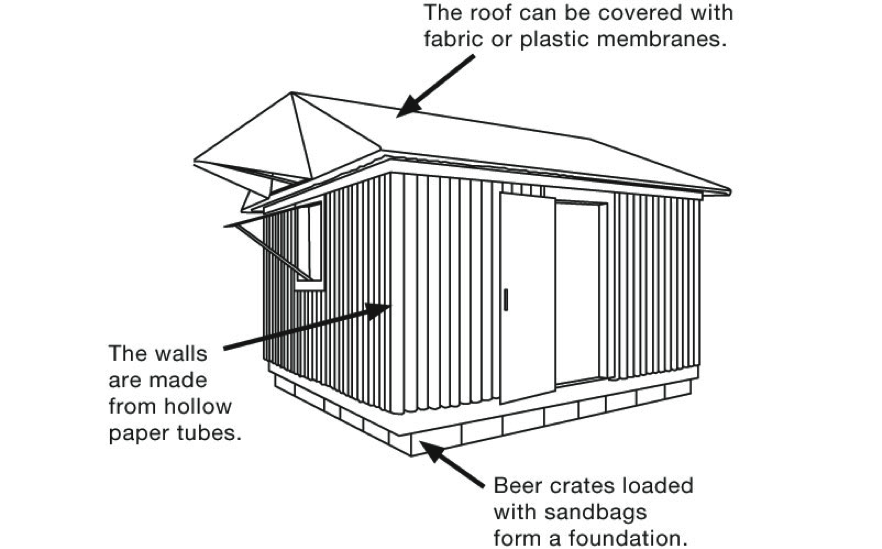S 09 |
Paper Log House |
type |
|
place |
|
date |
|
architect |
Shigeru Ban’s temporary dwellings for disaster relief were first used in 1995 after the Kobe earthquake, in modified form in Turkey in 2000 and in India in 2001. The buildings have an area of approximately 16-18 m², the dimensions varying depending on the dimensions of the modular building materials available. They are always constructed of materials readily available in the vicinity and can be built in a few days without specialist knowledge or machinery.
Beer crates weighed down with sand bags serve as foundations, or in India (where there were no beer crates) building rubble was used. The roof is made of tent canvas, truck tarpaulins or plastic sheeting. The distinctive walls are made of cardboard tubes, which are always found in great numbers on industrial sites (in Japan 106mm diameter, 4mm thick cardboard tubes were used). These can be filled with shredded wastepaper or other insulating materials as necessary. Self-adhesive tape ensures protection against rain at the joints between elements, and the cardboard tubes are fire-resistant (B1) without any preparation. Disaster victims can live in these temporary dwellings for years on end.



